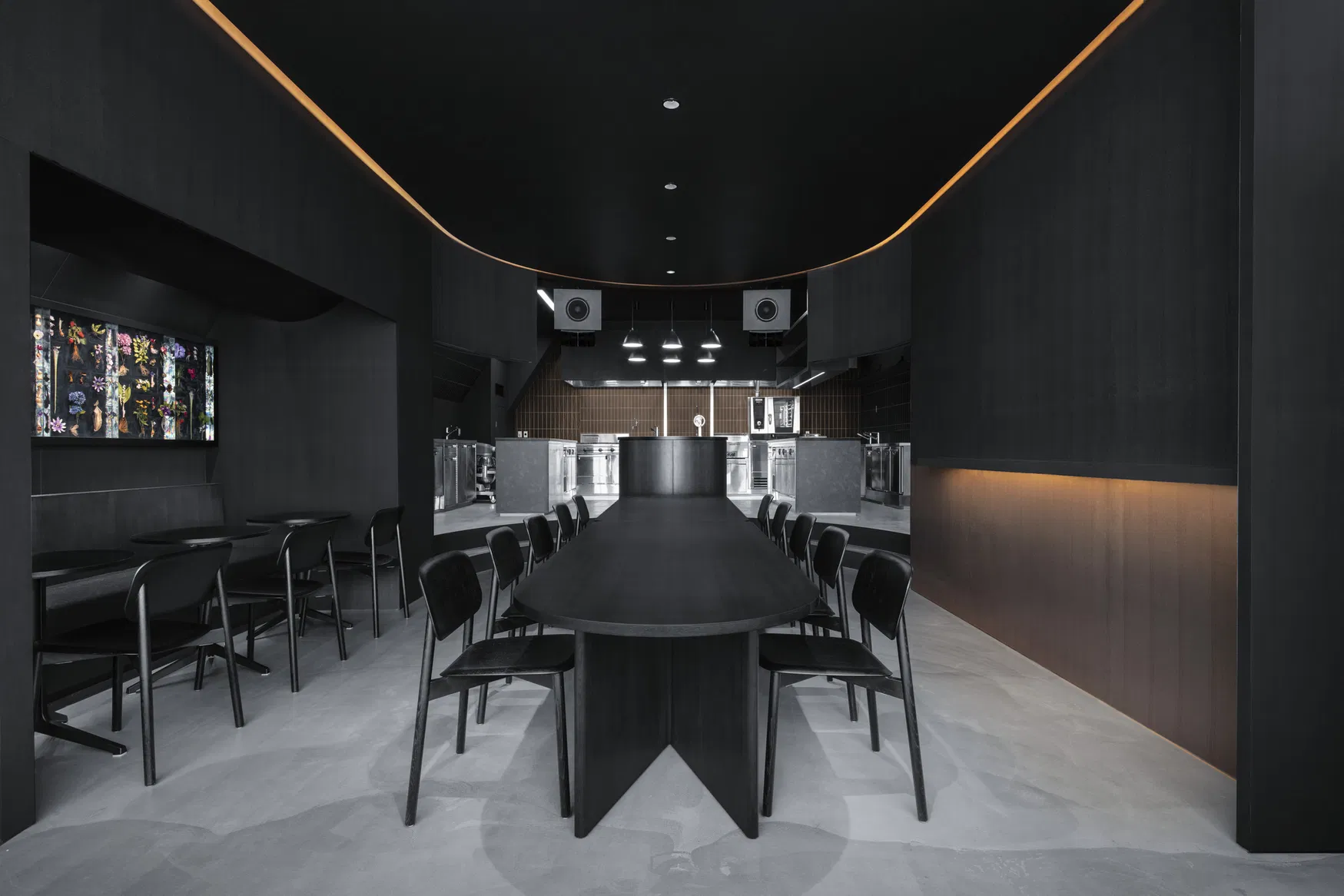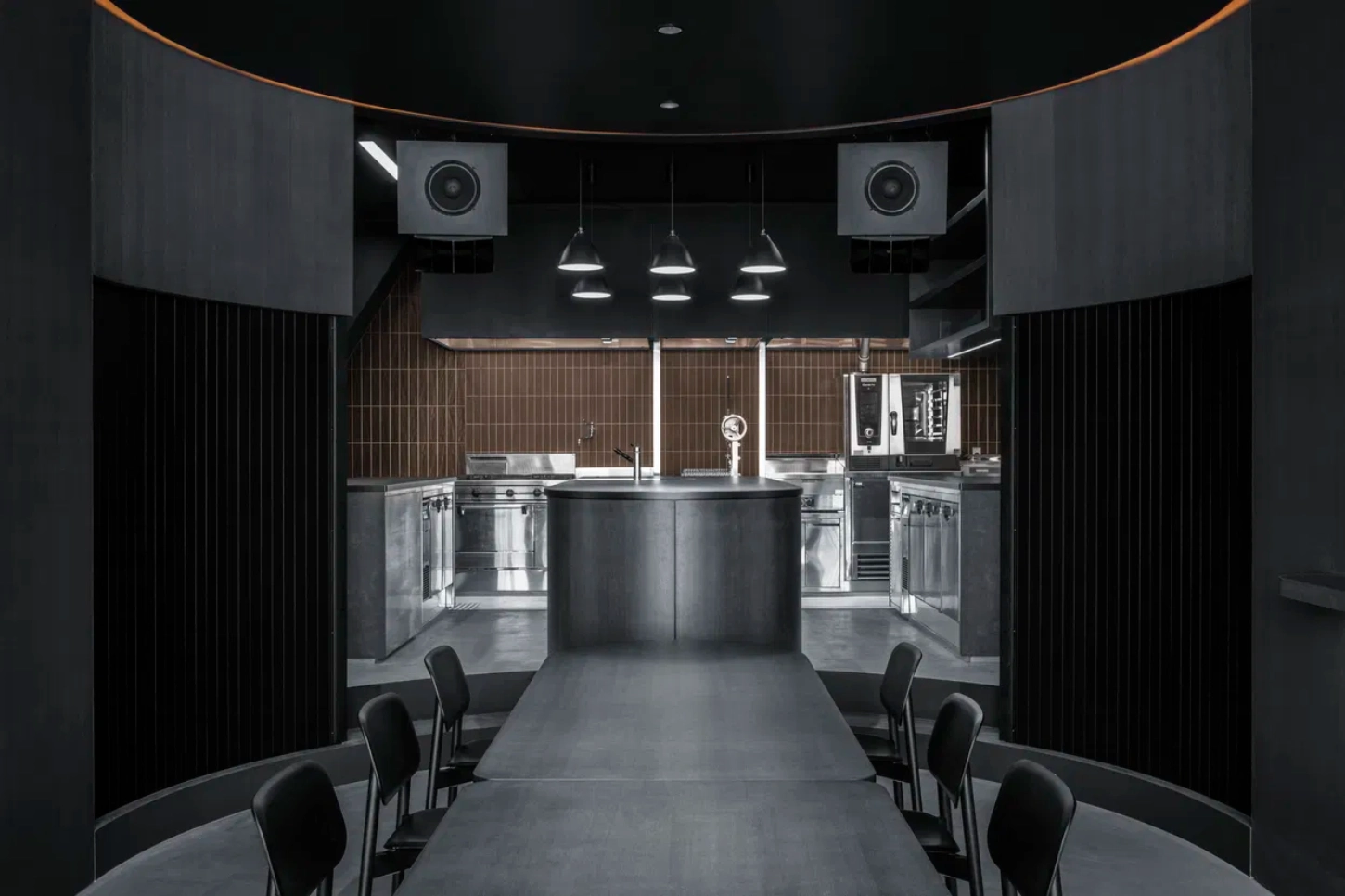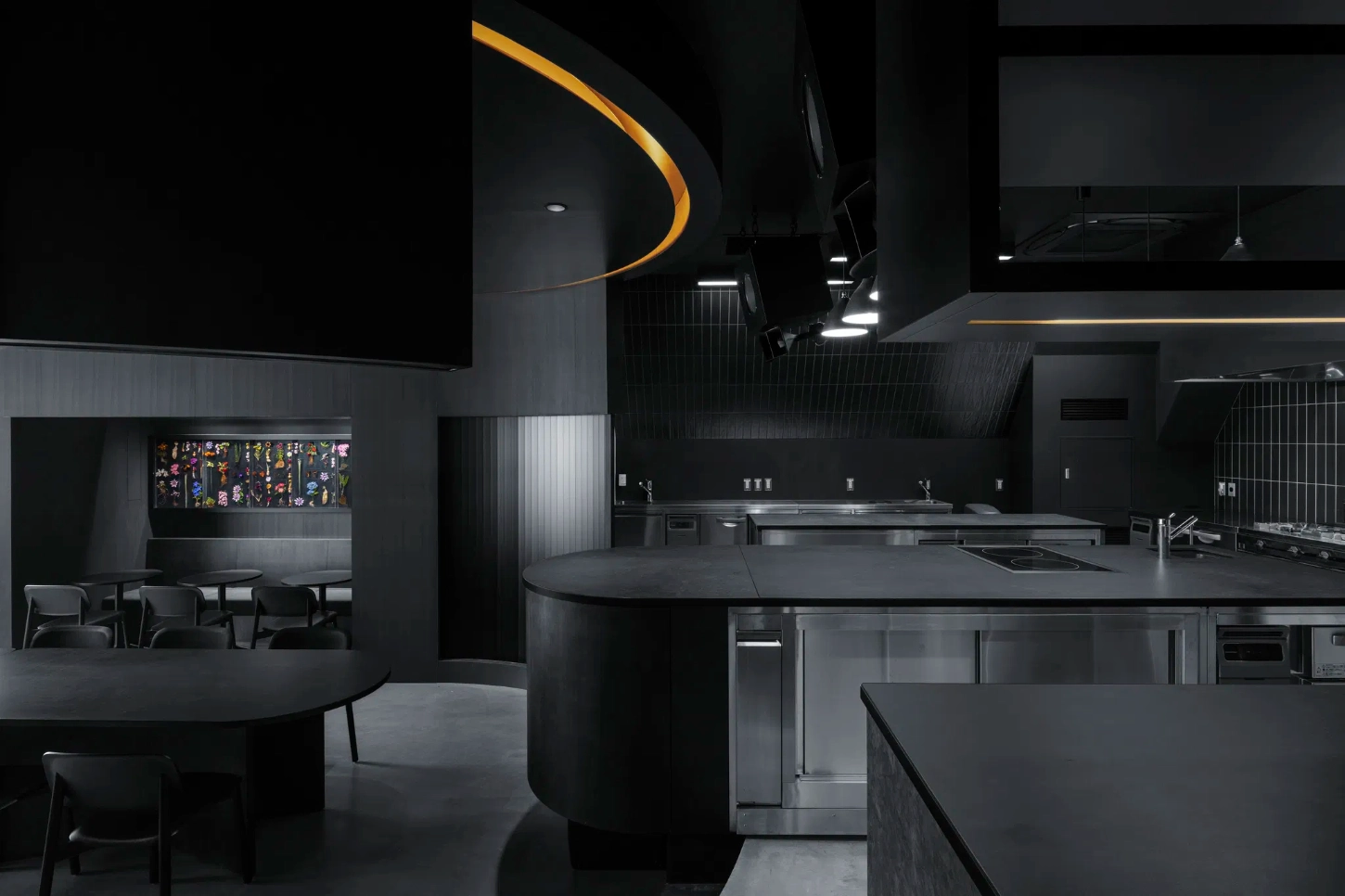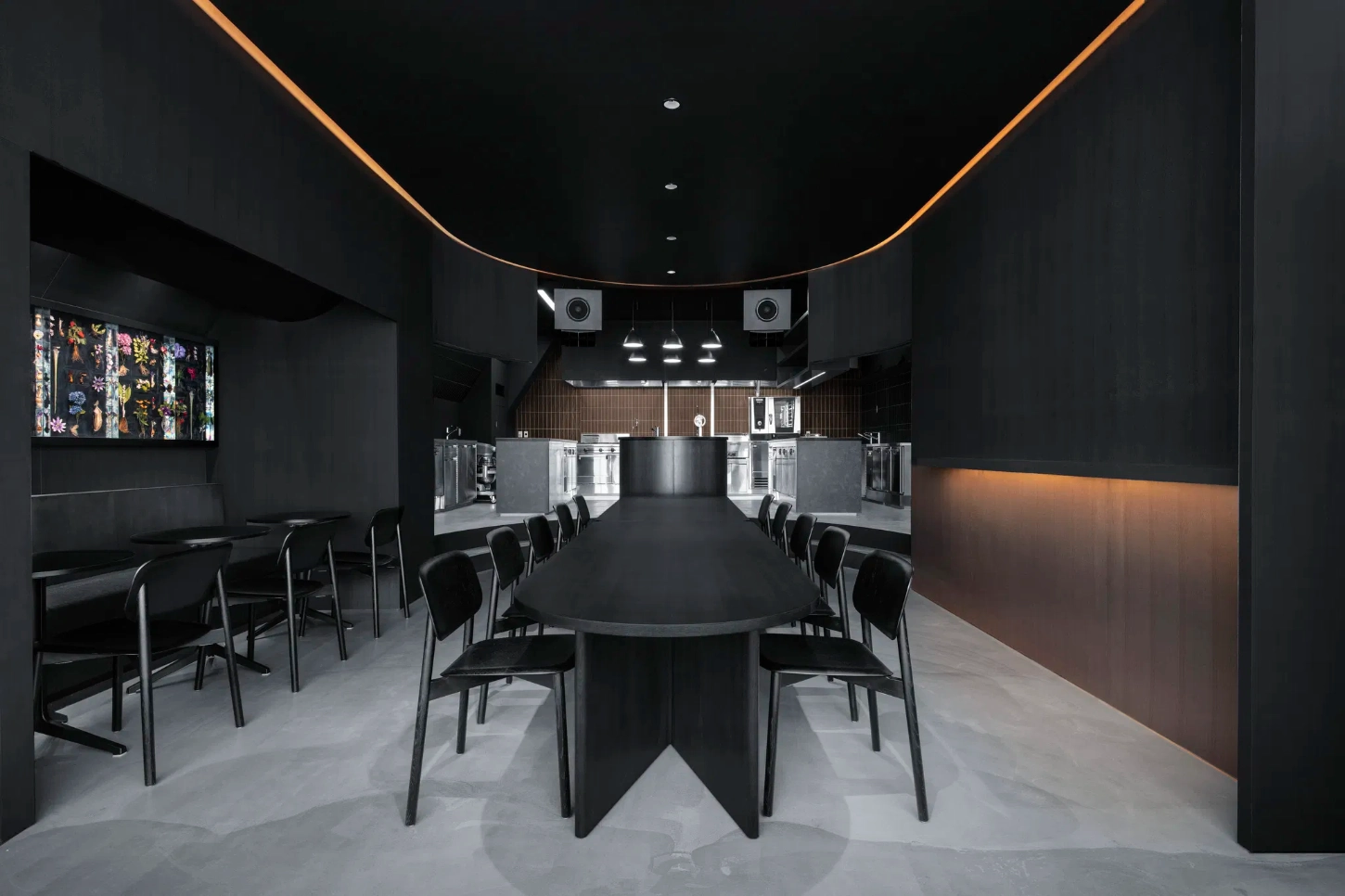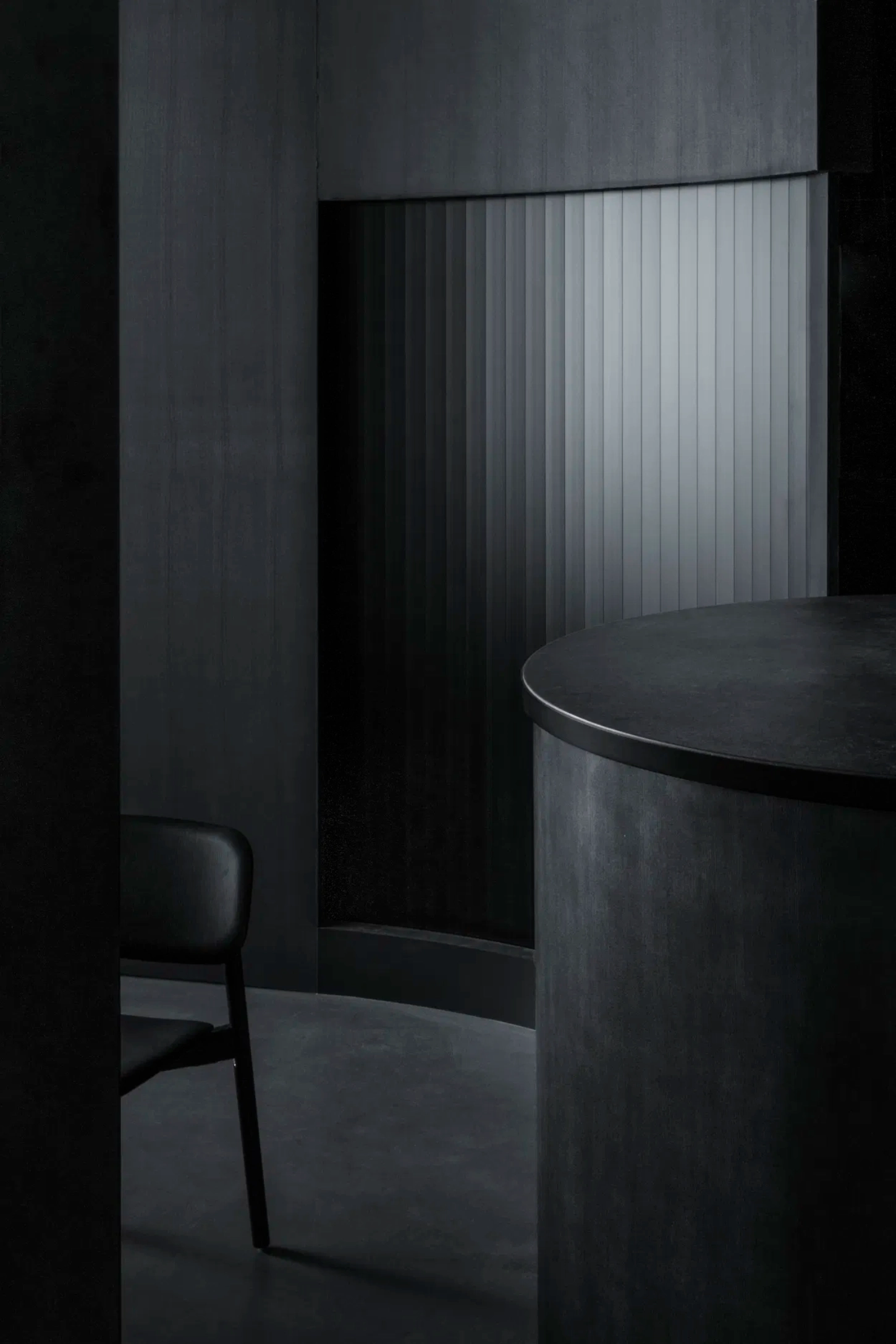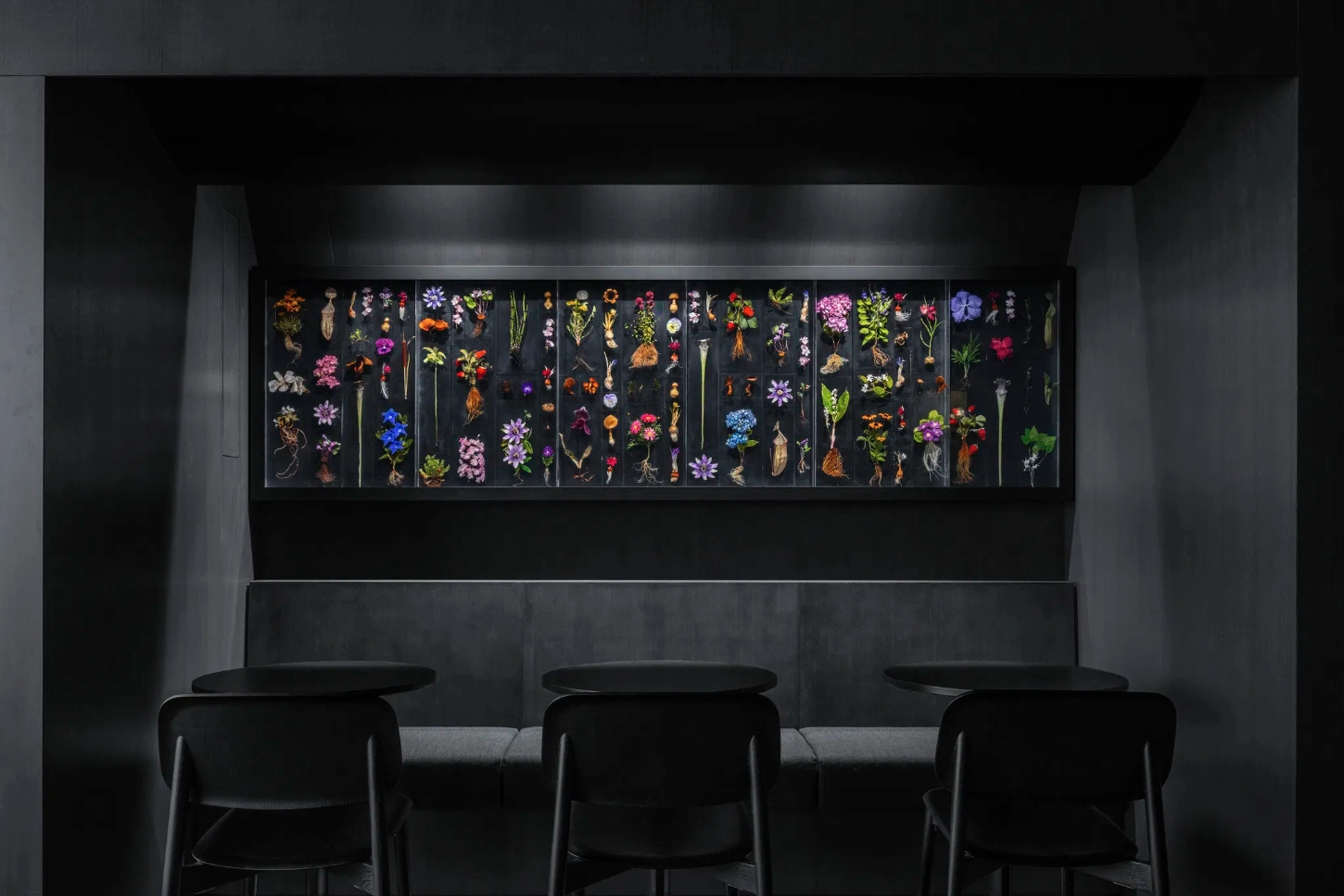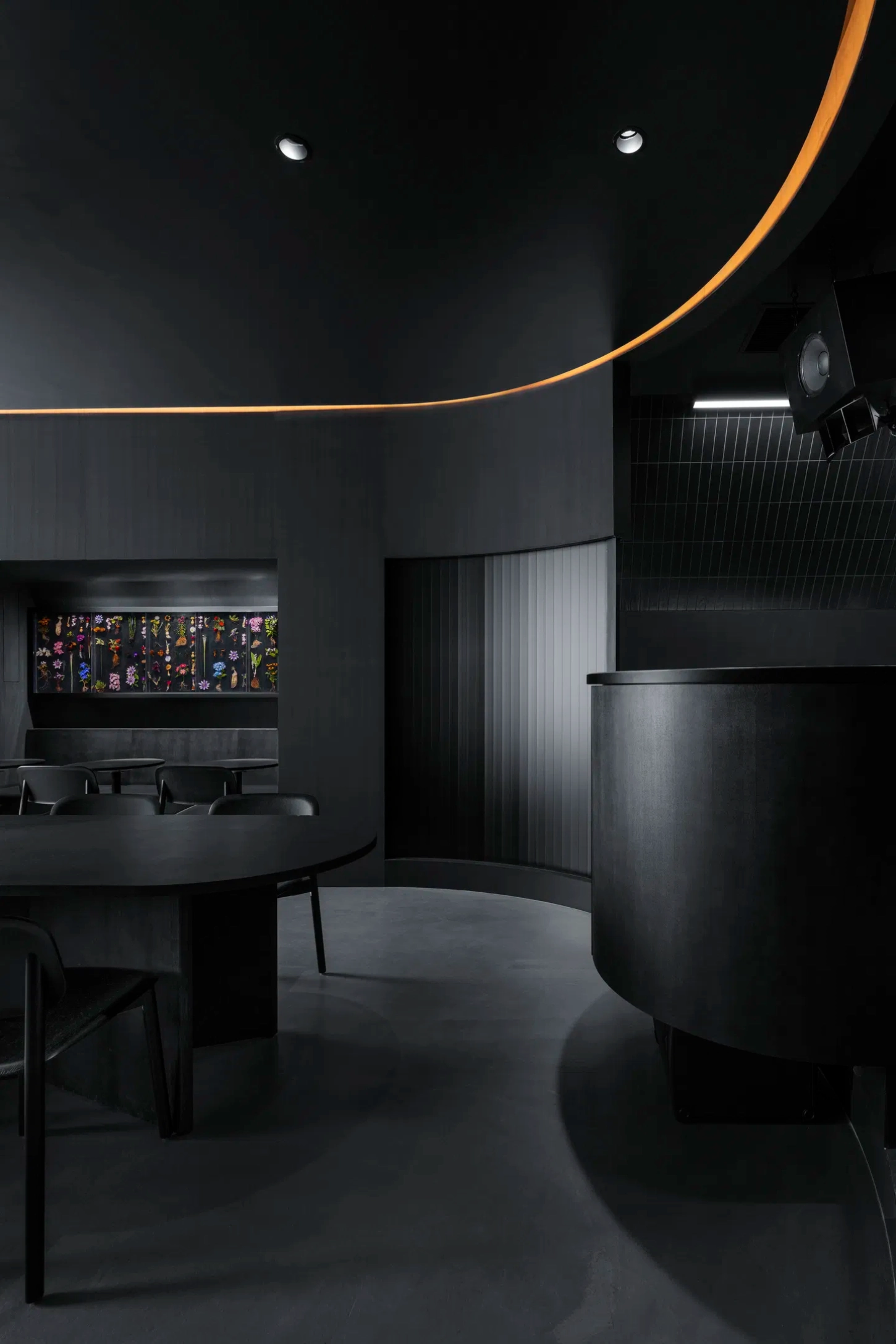Set above a Family Mart in Harajuku, Burnside sits at the intersection of two cultural languages. Designed by Norwegian studio Snøhetta in collaboration with the Bronx-based collective Ghetto Gastro, the project connects Tokyo’s conbini culture with the familiar rhythm of a New York bodega.
The space holds a quiet duality. In the daylight, it works as a café—open, informal, unhurried. After dark, it shifts into a restaurant and bar, the light lowering and the tone changing with it. Two intersecting arches mark the threshold between the dining zone and the kitchen, while blurred boundaries between service and preparation allow the space to flow as one continuous room.
Materials are restrained. Charred wood, ash tones and warm amber create a palette that feels grounded, drawing on both the Bronx collective’s Black Power Kitchen identity and the muted intimacy of Tokyo’s izakaya bars. A floral installation by Makoto Azuma and crafted joinery bring quiet detail without breaking the calm.
The kitchen sits slightly elevated, giving it the quiet focus of a stage. A long communal table stretches through the room, designed to adapt to events and gatherings. Ghetto Gastro’s influence is felt less through decoration and more through how people interact in the space—how food becomes a way of bringing people together.
As Snøhetta’s first project in Tokyo, Burnside isn’t about spectacle. It’s small in scale but deliberate in its layering. The architecture mediates between two places and two rhythms: convenience and ceremony, café and club. In a neighborhood that thrives on reinvention, Burnside offers a slower kind of shift—a space that changes not through grand gestures, but through tone, light, and the quiet weight of materials.

